 W
WAmphiaspidida is a taxon of extinct cyathaspidid heterostracan agnathans whose fossils are restricted to Lower Devonian marine strata of Siberia near the Taimyr Peninsula. Some authorities treat it as a suborder of Cyathaspidiformes, while others treat it as an order in its own right as "Amphiaspidiformes." In life, they are thought to be benthic animals that lived most of their lives mostly buried in the sediment of a series of hypersaline lagoons. Amphiaspids are easily distinguished from other heterostracans in that all of the plates of the cephalothorax armor are fused into a single, muff-like unit, so that the forebody of the living animal would have looked like a potpie or a hot waterbottle with a pair of small, or degenerated eyes sometimes flanked by preorbital openings, a pair of branchial openings for exhaling, and a simple, slit-like, or tube-like mouth.
 W
WAmphiaspididae is a family of extinct amphiaspidid heterostracan agnathans whose fossils are restricted to Lower Devonian marine strata of Siberia near the Taimyr Peninsula. In life, the amphiaspidids of Amphiaspididae are thought to be benthic animals that lived most of their lives mostly buried in the sediment of a series of hypersaline lagoons. Amphiaspids are easily distinguished from other heterostracans in that all of the plates of the cephalothorax armor are fused into a single, muff-like unit, so that the forebody of the living animal would have looked like a potpie with a pair of small, or degenerated eyes, with each flanked by a preorbital opening, and a simple, slit-like mouth.
 W
WAmphiaspidoidei is a taxon of extinct amphiaspidid heterostracan agnathans whose fossils are restricted to Lower Devonian marine strata of Siberia near the Taimyr Peninsula. In life, the amphiaspidids of Amphiaspidoidei are thought to be benthic animals that lived most of their lives mostly buried in the sediment of a series of hypersaline lagoons. Amphiaspids are easily distinguished from other heterostracans in that all of the plates of the cephalothorax armor are fused into a single, muff-like unit, so that the forebody of the living animal would have looked like a potpie or a hot waterbottle with a pair of small, or degenerated eyes flanked by preorbital openings, a pair of branchial openings for exhaling, and a simple, slit-like mouth.
 W
WAmphiaspis argo is the type species of the cyathaspidid taxon Amphiaspidida, and of the family Amphiaspididae. Its fossils are restricted to early Emsian-aged marine strata of the Taimyr Peninsula, Early Devonian Siberia. A. argo, as with all other amphiaspidids, is thought to have been a benthic filter feeder that lived on top of, or buried just below the surface of the substrate of hypersaline lagoon-bottoms.
 W
WAmphoraspis stellata is an amphiaspidid heterostracan in the family Amphiaspididae. Its fossils are restricted to early Devonian-aged marine strata of the Taimyr Peninsula, Siberia. A. stellata, as with all other amphiaspidids, is thought to have been a benthic filter feeder that lived on top of, or buried just below the surface of the substrate of hypersaline lagoon-bottoms.
 W
WThe Amur minnow or Lagowski's minnow is an Asian species of small freshwater cyprinid fish. It is found from the Lena and Amur rivers in the north to the Yangtze in China in the south.
 W
WThe Asian black bear, also known as the Asiatic black bear, moon bear and white-chested bear, is a medium-sized bear species native to Asia that is largely adapted to an arboreal lifestyle. It lives in the Himalayas, in the northern parts of the Indian subcontinent, the Korean Peninsula, northeastern China, the Russian Far East, the Honshū and Shikoku islands of Japan, and Taiwan. It is classified as vulnerable by the International Union for Conservation of Nature (IUCN), mostly because of deforestation and hunting for its body parts. Although largely herbivorous, Asian black bears can be very aggressive toward humans, who frequently trap or kill them for traditional medicine.
 W
WThe rough-legged buzzard, also called the rough-legged hawk, is a medium-large bird of prey. It is found in Arctic and Subarctic regions of North America, Europe and Russia and the Palearctic during the breeding season and migrates south for the winter. It was traditionally also known as the rough-legged falcon in such works as John James Audubon's The Birds of America.
 W
WCambaroides schrenckii is a species of crayfish endemic to north-eastern China and Russia. It is a freshwater species that also occurs in some brackish water areas. It occurs in habitats with still water, typically no more than 1 metre deep. It was named after Leopold von Schrenck.
 W
WCzekanowski's minnow is an Asian species of small freshwater cyprinid fish. It is found in Russia, China, Korea, and Mongolia.
 W
WThe raccoon dog, also known as the mangut, tanuki or neoguri, is a canid indigenous to East Asia. It is the only extant species in the genus Nyctereutes. Despite its name, its closest relatives are the true foxes, and not the American raccoons.
 W
WThe East Siberian brown bear (Ursus arctos collaris) is a population or subspecies of brown bear which ranges from eastern Siberia, beginning at the Yenisei river, north to the Arctic Circle, as far as Trans-Baikaliya, the Stanovoy Range, the Lena River, Kolyma and generally throughout Yakutia and the Altai Mountains. The subspecies is also present in northern Mongolia.
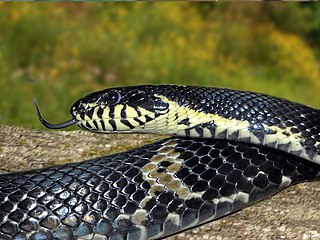 W
WElaphe schrenckii is a species of nonvenomous snake in the family Colubridae. The species is indigenous to Northeast Asia.
 W
WThe elk or wapiti is one of the largest species within the deer family, Cervidae, and one of the largest terrestrial mammals in North America and Northeast Asia. It is not to be confused with the still larger moose of North America, alternatively known as "elk" in British English and related names in other European languages, in reference to populations in Eurasia. Elk range in forest and forest-edge habitat, feeding on grasses, plants, leaves, and bark. Male elk have large antlers which are shed each year. Males also engage in ritualized mating behaviors during the rut, including posturing, antler wrestling (sparring), and bugling, a loud series of vocalizations that establishes dominance over other males and attracts females.
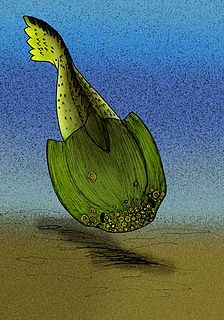 W
WGabreyaspididae is a family of extinct amphiaspidid heterostracan agnathans whose fossils are restricted to Lower Devonian marine strata of Siberia near the Taimyr Peninsula. In life, all amphiaspidids are thought to be benthic animals that lived most of their lives mostly buried in the sediment of a series of hypersaline lagoons. Amphiaspids are easily distinguished from other heterostracans in that all of the plates of the cephalothoracic armor are fused into a single, muff-like unit, so that the forebody of the living animal would have looked, in the case of gabreyaspidids, vaguely like a horseshoe crab with a pair of small, or degenerated eyes, with each flanked by a preorbital opening, and a simple, slit-like mouth positioned slightly ventrally.
 W
WGloydius halys is a venomous pitviper species found within a wide range that stretches across Asia, from Russia, east of the Urals, eastwards through China. Five subspecies are currently recognized, including the nominotypical form described here.
 W
WGloydius saxatilis is a venomous pitviper species endemic to Russia, China and the Korean Peninsula. No subspecies are currently recognized.
 W
WGloydius ussuriensis is a venomous pitviper species endemic to far east Russia, northeastern China and the Korean Peninsula. No subspecies are currently recognized.Common names:Ussuri pit viper, Ussuri mamushi.
 W
WGnaphosa borea is a ground spider species with Holarctic distribution. It is found in boreal forests in Russia, in the United States and in Canada.
 W
WHemaris ottonis is a moth of the family Sphingidae. It is known from the Russian Far East, north-eastern China and the Korean Peninsula.
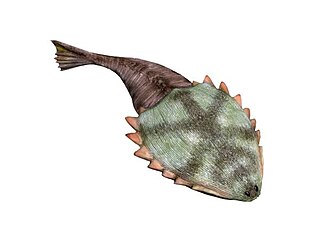 W
WHibernaspidoidei is a taxon of extinct amphiaspidid heterostracan agnathans whose fossils are restricted to Lower Devonian marine strata of Siberia near the Taimyr Peninsula. In life, hibernaspid amphiaspidids are thought to be benthic animals that lived most of their lives mostly buried in the sediment of a series of hypersaline lagoons. All amphiaspids are easily distinguished from other heterostracans in that all of the plates of the cephalothorax armor are fused into a single, muff-like unit, so that the forebody of the living animal would have looked like a potpie or a hot waterbottle with a pair of small, or degenerated eyes, a pair of branchial openings for exhaling, and, in the case of hibernaspids, a simple, slit-like mouth at the anterior end of a tube-like head.
 W
WHibernaspis is a genus of extinct amphiaspidid heterostracan agnathans whose fossils are restricted to Lower Devonian marine strata of Siberia near the Taimyr Peninsula. In life, species of Hibernaspis were thought to be benthic animals that lived most of their lives mostly buried in the sediment of a series of hypersaline lagoons. All amphiaspids are easily distinguished from other heterostracans in that all of the plates of the cephalothorax armor are fused into a single, muff-like unit, so that, in the case of Hibernaspis, the forebody of the living animal would have looked like a large guitar pic with serrated edges, with a pair of tiny, degenerated eyes, a pair of branchial openings for exhaling, and a simple, slit-like mouth at the anterior end.
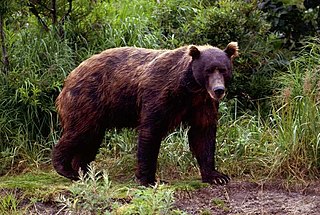 W
WThe Kamchatka brown bear, also known as the "Far Eastern brown bear", or in Russian: Камчатский бурый медведь, is a subspecies of brown bear native to the Anadyrsky District, the Kamchatka Peninsula, Karaginskiy Island, the Kuril Islands, the coastal strip west of the Sea of Okhotsk southward to the Stanovoy Range, and the Shantar Islands in the Far East. Outside the former Soviet Union, the subspecies occurs in Saint Lawrence Island in the Bering sea. It is closely related to one clade of brown bears in Alaska and northwest North America, and is thought to be the ancestor of the Kodiak bear.
 W
WThe lake minnow or swamp minnow is a Eurasian species of small freshwater cyprinid fish. It has a wide but disjunct distribution including parts of Europe and Asia.
 W
WThe Siberian lynx, also known as the East Siberian lynx, is a subspecies of Eurasian lynx living in the Russian Far East. It lives in the Stanovoy Range and east of the Yenisei River. There were 5,890 mature individuals in the Russian Far East as of 2013. Prey include the Siberian roe deer. The Siberian lynx is the second most common subspecies of the Eurasian lynx. According to a study done on the mortality of Eurasian lynx, the Siberian lynx lives to an average age of 15 years.
 W
WThe moose or elk (Eurasia), Alces alces, is a member of the New World deer subfamily and is the largest and heaviest extant species in the deer family. Most adult male moose have distinctive broad, palmate antlers; most other members of the deer family have antlers with a dendritic ("twig-like") configuration. Moose typically inhabit boreal forests and temperate broadleaf and mixed forests of the Northern Hemisphere in temperate to subarctic climates. Hunting and other human activities have caused a reduction in the size of the moose's range over time. It has been reintroduced to some of its former habitats. Currently, most moose occur in Canada, Alaska, New England, Fennoscandia, the Baltic states, and Russia. Its diet consists of both terrestrial and aquatic vegetation. The most common moose predators are the gray wolf along with bears and humans. Unlike most other deer species, moose do not form herds and are solitary animals, aside from calves who remain with their mother until the cow begins estrus, at which point the cow chases away young bulls. Although generally slow-moving and sedentary, moose can become aggressive and move quickly if angered or startled. Their mating season in the autumn features energetic fights between males competing for a female.
 W
WNola karelica is a moth of the family Nolidae. It is found from northern and central Fennoscandia to northern Russia, Amur, Siberia and Armenia.
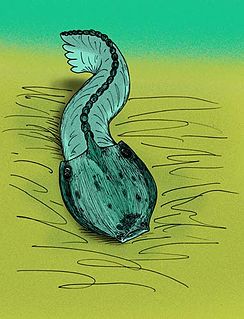 W
WOlbiaspididae is a family of extinct amphiaspidid heterostracan agnathans whose fossils are restricted to Lower Devonian marine strata of Siberia near the Taimyr Peninsula. In life, all amphiaspidids are thought to be benthic animals that lived most of their lives mostly buried in the sediment of a series of hypersaline lagoons. Amphiaspids are easily distinguished from other heterostracans in that all of the plates of the cephalothoracic armor are fused into a single, muff-like unit, so that the forebody of the living animal would have looked, in the case of olbiaspidids, vaguely like a hot water bottle with a pair of small, or degenerated eyes, with each flanked by a preorbital opening, and a simple, slit-like mouth positioned at the anteriormost portion of the cephalothoracic armor.
 W
WThe polar bear is a hypercarnivorous bear whose native range lies largely within the Arctic Circle, encompassing the Arctic Ocean, its surrounding seas and surrounding land masses. It is the largest extant bear species, as well as the largest extant predatory carnivore. A boar weighs around 350–700 kg (770–1,540 lb), while a sow is about half that size. Although it is the sister species of the brown bear, it has evolved to occupy a narrower ecological niche, with many body characteristics adapted for cold temperatures, for moving across snow, ice and open water, and for hunting seals, which make up most of its diet. Although most polar bears are born on land, they spend most of their time on the sea ice. Their scientific name means "maritime bear" and derives from this fact. Polar bears hunt their preferred food of seals from the edge of sea ice, often living off fat reserves when no sea ice is present. Because of their dependence on the sea ice, polar bears are classified as marine mammals.
 W
WRana amurensis is a species of true frog found in northern Asia. It ranges across western Siberia, as well as northeastern China, northeastern Mongolia, and on the northern Korean Peninsula and on Sakhalin. Rana coreana was previously included in this species as a subspecies. Found at latitudes up to 71° N, it is the northernmost wild amphibian species.
 W
WThe Siberian chipmunk or common chipmunk appears across northern Asia from central Russia to China, Korea, and Hokkaidō in northern Japan. Imported from South Korea and introduced in Europe as a pet in the 1960s, it is the only chipmunk found outside North America and is classed either as the only living member of the genus Eutamias, or as a member of a genus including all chipmunks.
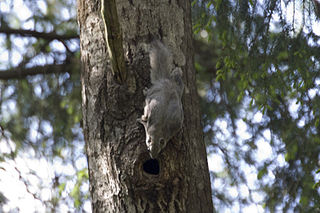 W
WThe Siberian flying squirrel is an Old World flying squirrel with a range from the Baltic Sea in the west to the Pacific Coast in the east. It is the only species of flying squirrel found in Europe. It is considered vulnerable within the European Union where it is now found only in Estonia, Finland and Latvia out of the 27 countries in the Union.
 W
WThe Siberian musk deer is a musk deer found in the mountain forests of Northeast Asia. It is most common in the taiga of southern Siberia, but is also found in parts of Mongolia, Inner Mongolia, Manchuria and the Korean peninsula.
 W
WThe Siberian roe deer or eastern roe deer is a species of roe deer found in northeastern Asia. In addition to Siberia and Mongolia, it is found in Kazakhstan, the Tian Shan Mountains of Kyrgyzstan, eastern Tibet, the Korean Peninsula, and northeastern China (Manchuria).
 W
WThe Siberian Tiger Introduction Project involves reestablishing populations of the Siberian tiger, also known as the Amur tiger, in their former range and also expanding their range by introducing them as replacements of their genetically similar relative, the extinct Caspian tiger, which inhabited Central and Western Asia. Currently, the Siberian tiger inhabits the cold mountains of the Russian Far East and northern China.
 W
WThe Siberian weasel or kolonok is a medium-sized weasel native to Asia, where it is widely distributed and inhabits various forest habitats and open areas. It is therefore listed as Least Concern on the IUCN Red List.
 W
WTalavera aequipes is a small jumping spider that is found in Eurasia. It is very hard to distinguish from several very similar species, but is the most frequent of these spiders in Central Europe. It is small enough to reside comfortably in snail shells of down to 5 mm length during winter, where they also lay their eggs. Sometimes it shares a larger shell with Pellenes tripunctatus, where T. aequipes lives deep inside, and P. tripunctatus is found in the larger opening.
 W
WThomisus onustus is a crab spider species in the genus Thomisus belonging to the family Thomisidae.
 W
WThe pale thrush is a passerine bird of the eastern Palearctic belonging to the genus Turdus in the thrush family Turdidae. It is closely related to the eye-browed thrush and grey-backed thrush.
 W
WThe Siberian tiger is a population of the Panthera tigris tigris subspecies that is native to the Russian Far East, Northeast China, and possibly North Korea. It once ranged throughout the Korean Peninsula, north China, and eastern Mongolia. Today, this population inhabits mainly the Sikhote-Alin mountain region in southwest Primorye Province in the Russian Far East. In 2005, there were 331–393 adult and subadult Siberian tigers in this region, with a breeding adult population of about 250 individuals. The population had been stable for more than a decade because of intensive conservation efforts, but partial surveys conducted after 2005 indicate that the Russian tiger population was declining. An initial census held in 2015 indicated that the Siberian tiger population had increased to 480–540 individuals in the Russian Far East, including 100 cubs. This was followed up by a more detailed census which revealed there was a total population of 562 wild Siberian tigers in Russia. As of 2014, about 35 individuals were estimated to range in the international border area between Russia and China.
 W
WThe tundra wolf, also known as the Turukhan wolf, is a subspecies of grey wolf native to Eurasia's tundra and forest-tundra zones from Finland to the Kamchatka Peninsula. It was first described in 1792 by Robert Kerr, who described it as living around the Yenisei, and of having a highly valued pelt.
 W
WThe Ussuri brown bear, also known as the Ezo brown bear and the black grizzly bear, is a subspecies of the brown bear or population of the Eurasian brown bear. One of the largest brown bears, a very large Ussuri brown bear may approach the Kodiak bear in size. The Ussuri is not the same subspecies as the grizzly bear.
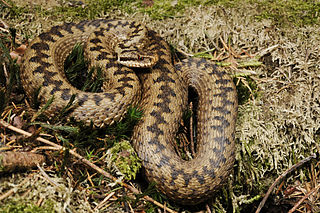 W
WVipera berus, the common European adder or common European viper, is a venomous snake that is extremely widespread and can be found throughout most of Western Europe and as far as East Asia. Known by a host of common names including common adder and common viper, adders have been the subject of much folklore in Britain and other European countries. They are not regarded as especially dangerous; the snake is not aggressive and usually bites only when really provoked, stepped on, or picked up. Bites can be very painful, but are seldom fatal. The specific name, berus, is New Latin and was at one time used to refer to a snake, possibly the grass snake, Natrix natrix.